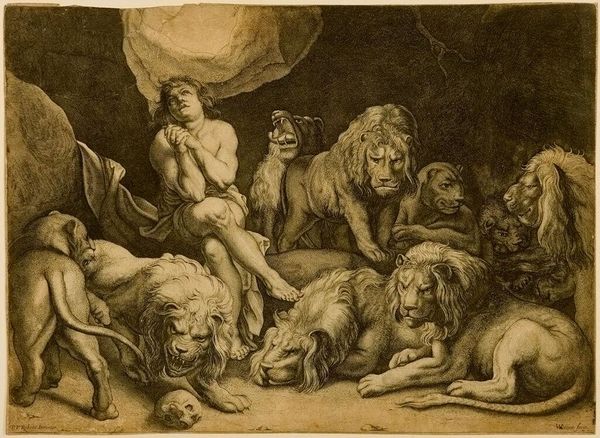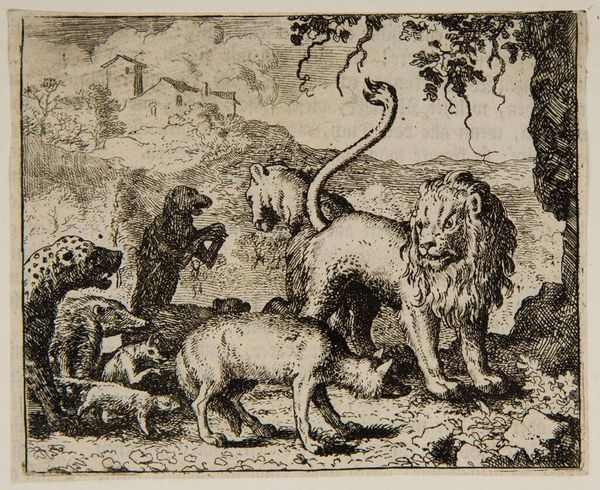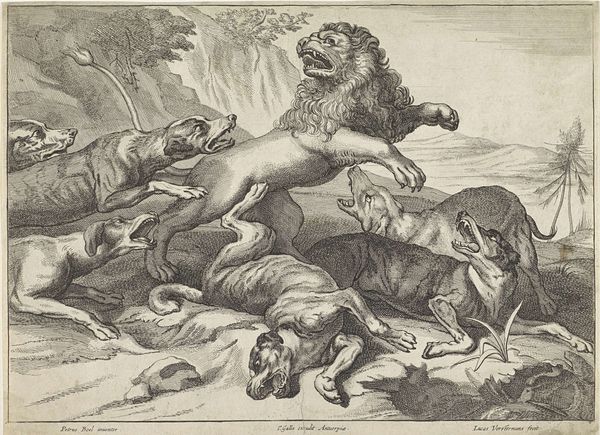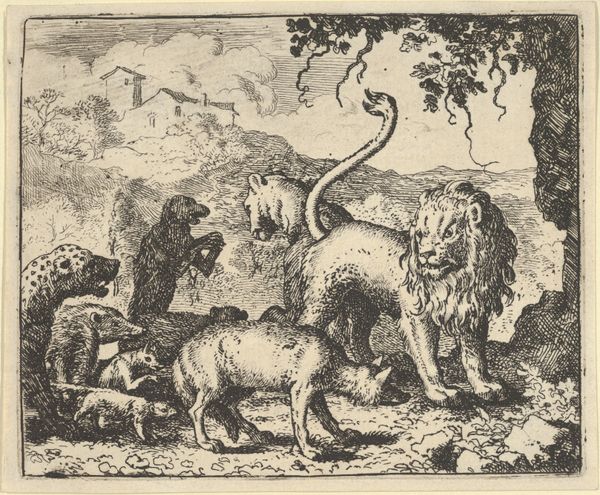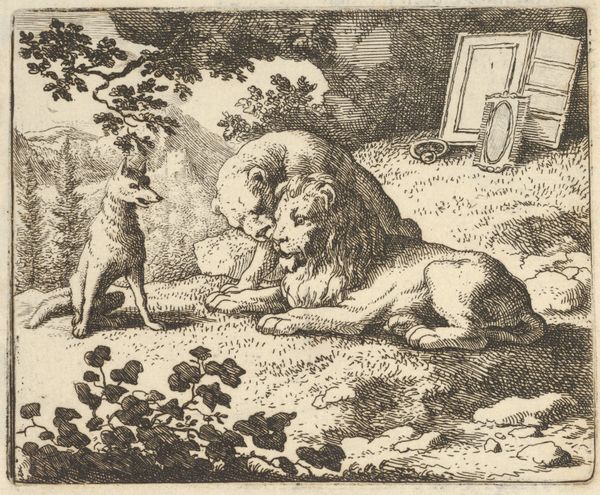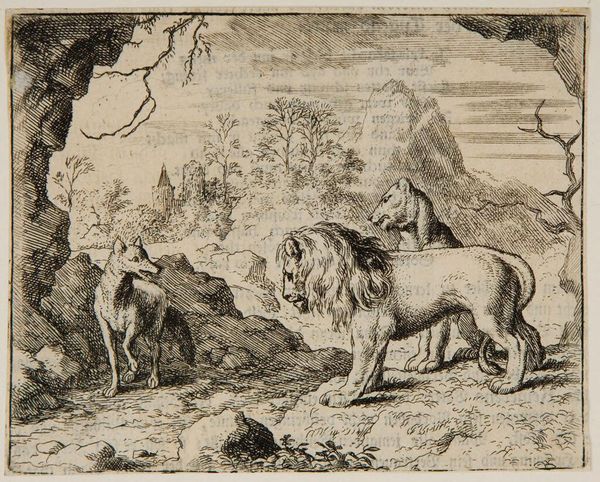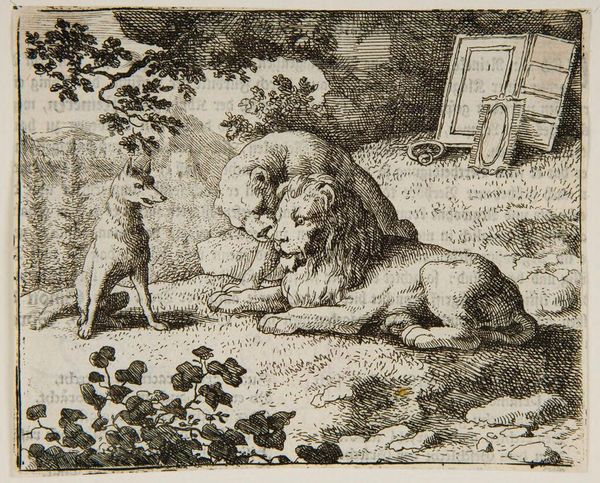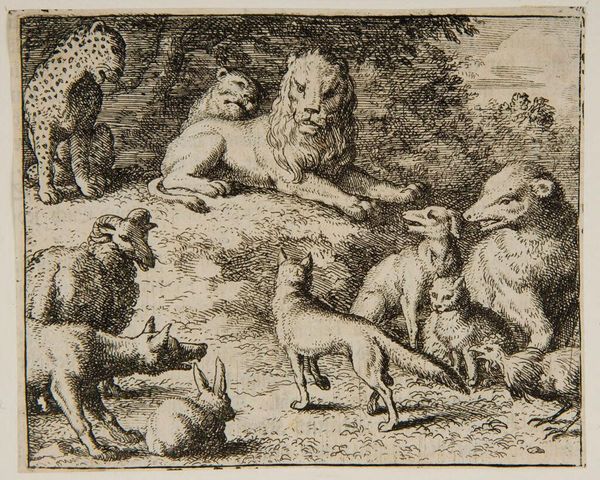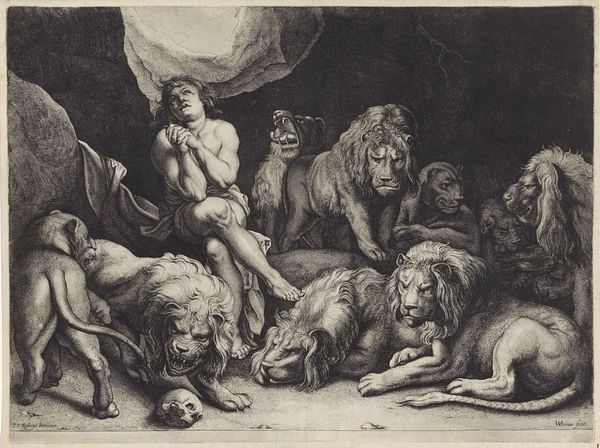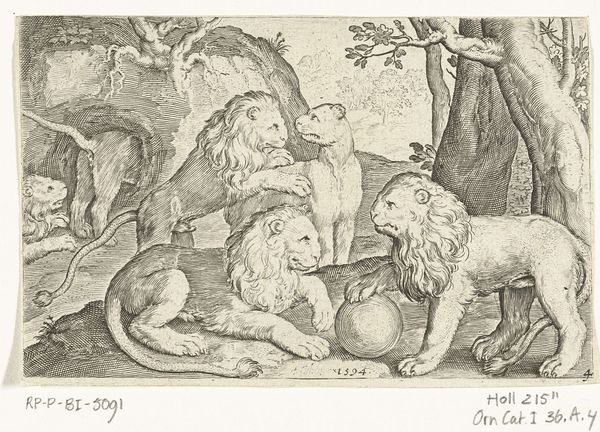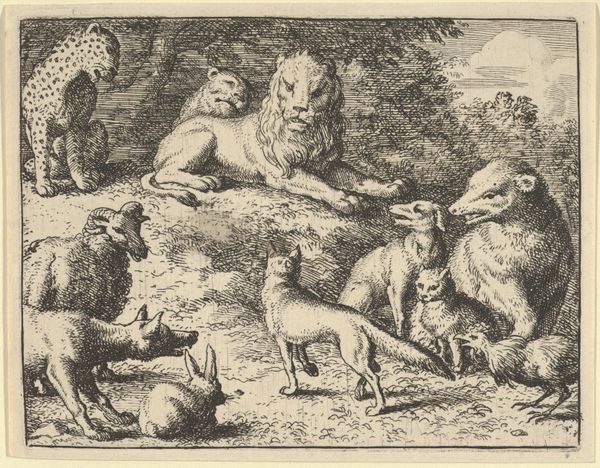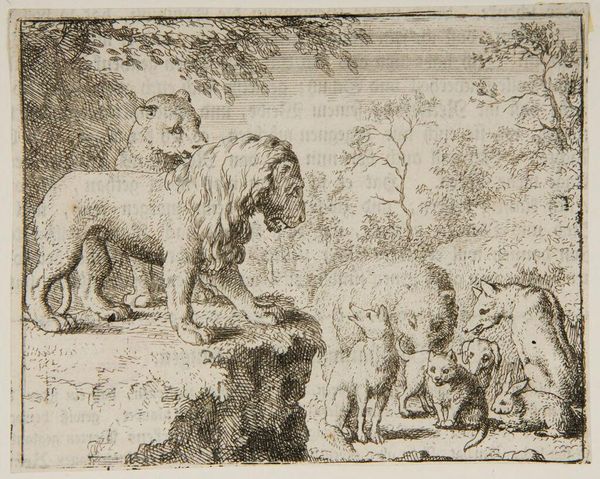
Dimensions: height 79 mm, width 121 mm
Copyright: Rijks Museum: Open Domain
Editor: So, here we have Reinier Vinkeles' "Adam and Eve in Paradise" from 1773, rendered in engraving. It’s quite striking, almost like a stage setting. Adam is pointing out into the distance, and all these animals are placidly gathered around. What do you make of it? Curator: It’s a fascinating piece to examine from a historical perspective. Look at the period; it's the late 18th century. How does Vinkeles’ vision of paradise reflect Enlightenment ideals? Is this a state of rational order imposed upon nature, evident in the almost scientific cataloging of animal species? Editor: That’s a really interesting point! The animals are very detailed, almost like an inventory. I hadn’t thought about that. Curator: The print also participates in a much broader political discourse. The biblical story has been endlessly interpreted throughout history and across religious systems to explain the origins of gender, social order, labor, and power. Does this image enforce or critique dominant conceptions about humanity? Editor: Hmmm… So, is Vinkeles perhaps reinforcing existing social structures, or is he offering a new interpretation of the familiar origin story through his artistic choices? The monkey seems mischievously out of place in that otherwise peaceful gathering, almost making fun of this ‘paradise’. Curator: Exactly! And how is the 'naturalness' of their nude bodies conveyed, what do they convey, considering how depictions of the nude body have varied culturally across historical contexts? Are they classical figures, idealized, or something else entirely? How would people at that time perceive their depiction in the artwork, and what would the social or political implications of their aesthetic portrayal be? Editor: This really gets you thinking about how much context shapes your understanding of art, even depictions of timeless tales. I never considered all of this! Curator: Precisely. Art doesn't exist in a vacuum. Considering those dynamics adds another dimension to experiencing an artwork.
Comments
No comments
Be the first to comment and join the conversation on the ultimate creative platform.
